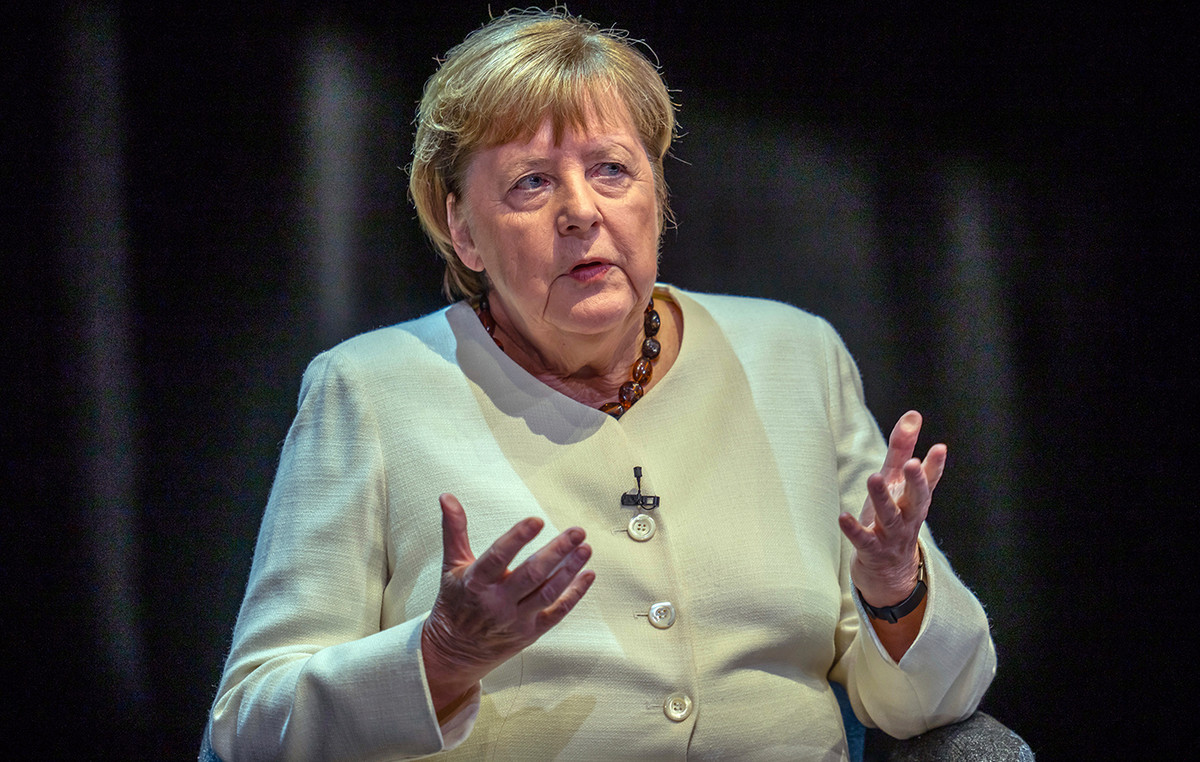This is what you need to know to operate today Monday, June 30:
He US Dollar Index (USD)which tracks the performance of the USD in front of a basket of six main currencies, continues to fall on the last day of June after losing more than 1.5% in the previous week. The economic calendar will present inflation data from Germany and the Fed manufacturing index of the US Dallas several monetary policy of the main central banks will also give speeches throughout the day.
US dollar price this month
The lower table shows the percentage of the US dollar change (USD) compared to the main currencies this month. American dollar was the weakest currency against the euro.
| USD | EUR | GBP | JPY | CAD | Aud | NZD | CHF | |
|---|---|---|---|---|---|---|---|---|
| USD | -3.07% | -1.61% | -0.13% | -1.04% | -1.43% | -1.78% | -3.04% | |
| EUR | 3.07% | 1.54% | 3.01% | 2.09% | 1.73% | 1.65% | 0.03% | |
| GBP | 1.61% | -1.54% | 1.46% | 0.58% | 0.20% | -0.05% | -1.46% | |
| JPY | 0.13% | -3.01% | -1.46% | -0.91% | -1.21% | -1.51% | -2.85% | |
| CAD | 1.04% | -2.09% | -0.58% | 0.91% | -0.31% | -0.62% | -2.01% | |
| Aud | 1.43% | -1.73% | -0.20% | 1.21% | 0.31% | -0.07% | -1.66% | |
| NZD | 1.78% | -1.65% | 0.05% | 1.51% | 0.62% | 0.07% | -1.59% | |
| CHF | 3.04% | -0.03% | 1.46% | 2.85% | 2.01% | 1.66% | 1.59% |
The heat map shows the percentage changes of the main currencies. The base currency is selected from the left column, while the contribution currency is selected in the upper row. For example, if you choose the US dollar of the left column and move along the horizontal line to the Japanese yen, the percentage change shown in the box will represent the USD (base)/JPY (quotation).
The US Treasury Secretary, Scott Besent, said during the weekend that the fall of the USD this year is a normal variation, adding that USA still has a strong USD policy. Since the beginning of 2025, the USD index has fallen around 12% and was quoting at its weakest level since March 2022, around 97.00. Meanwhile, the futures of the US stock market indices earn between 0.4% and 0.6% in the European morning on Monday, reflecting an atmosphere of positive risk market.
The United Kingdom government announced in a press release on Monday that the commercial agreement between the United Kingdom and the US has officially entered into force. UK car manufacturers can now export to the US under a reduced tariff fee of 10% and the United Kingdom aerospace sector will have 10% tariffs eliminated in products such as engines and aircraft parts. After the rebound of the previous week, GBP/USD It remains relatively quiet and moves laterally slightly above 1,3700.
EUR/USD It clings to small daily profits above 1,1700 in the European morning on Monday. The president of the European Central Bank (ECB), Christine Lagarde, will give an introductory speech at the opening and dinner of the ECB forum on Central Banking 2025 in Sintra, Portugal.
USD/JPY It is maintained under bearish pressure and listed below 144.00 in the European session on Monday. The main commercial negotiator of Japan, Ryosei Akazawa, said Monday that he will continue working with the United States (USA) to reach an agreement while defending the national interest.
After the strong fall on Friday, Gold The week began at a disadvantage and touched its lowest level since the end of May below $ 3,250 before bouncing around $ 3,300.
The Canada Ministry of Finance said in an early statement on Monday that they will terminate the Digital Services Tax to advance in broader commercial negotiations with the US and noted that the Prime Minister of Canada, Mark Carney, and President Donald Trump agreed that the parties will resume negotiations to reach an agreement for July 21. USD/CAD Low slightly at the beginning of the week and quote around 1,3660.
FAQS Central Banks
Central banks have a key mandate that consists in guaranteeing the stability of prices in a country or region. Economies constantly face inflation or deflation when the prices of certain goods and services fluctuate. A constant rise in the prices of the same goods means inflation, a constant decrease in the prices of the same goods means deflation. It is the Central Bank’s task to keep the demand online by adjusting its interest rate. For larger central banks, such as the US Federal Reserve (FED), the European Central Bank (ECB) or the Bank of England (BOE), the mandate is to maintain inflation about 2%.
A central bank has an important tool to raise or lower inflation: modify its reference interest rate. In precommunicated moments, the Central Bank will issue a statement with its reference interest rate and give additional reasons of why it maintains or modifies it (cut it or the SUBE). Local banks will adjust their savings and loan rates accordingly, which in turn will make it difficult or facilitate that citizens obtain profits from their savings or that companies ask for loans and invest in their businesses. When the Central Bank substantially rises interest rates, there is talk of monetary hardening. When it reduces its reference rate, it is called monetary relaxation.
A central bank is usually politically independent. The members of the Central Bank Policy Council go through a series of panels and hearings before being appointed for a position in the Policy Council. Each member of that council usually has a certain conviction on how the Central Bank should control inflation and the consequent monetary policy. Members who want a very flexible monetary policy, with low types and cheap loans, to substantially boost the economy, while comprising with inflation slightly greater than 2%, are called “pigeons.” Members who prefer higher types to reward savings and want to control inflation at all times are called “hawks” and will not rest until inflation is located at 2% or just below.
Normally, there is a president who directs each meeting, has to create a consensus between the hawks or the pigeons and has the last word when the votes must be divided to avoid a draw to 50 on whether the current policy must be adjusted. The president will pronounce speeches, which can often be followed live, in which he will communicate the current monetary position and perspectives. A central bank will try to boost its monetary policy without causing violent oscillations of the fees, the actions or their currency. All members of the Central Bank will channel their position towards the markets before a monetary policy meeting. A few days before a monetary policy meeting is held and until the new policy has been communicated, the members are prohibited from speaking publicly. It is what is called a period of silence.
Source: Fx Street
I am Joshua Winder, a senior-level journalist and editor at World Stock Market. I specialize in covering news related to the stock market and economic trends. With more than 8 years of experience in this field, I have become an expert in financial reporting.






